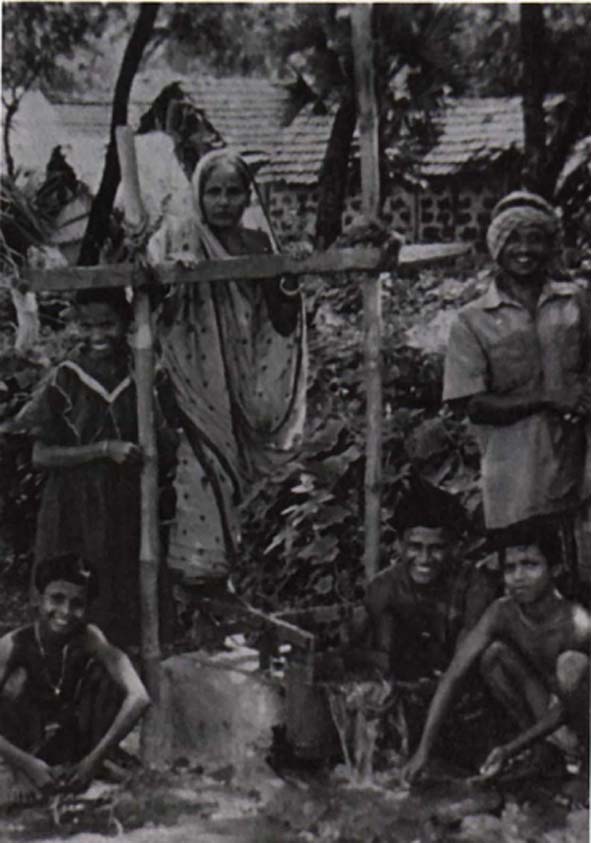| About Us | Contact Us | Contact Database | Support Us |
- MANUAL-
3.2.5
Animate Energy
Animate energy sources, derived from human
beings and draught animals (for example, bullocks), account for the bulk
of the energy used in agriculture particularly among small and marginal
farmers. Apart for draft power, animate energy has been traditionally used
for various mechanical outputs such as for threshing, grinding, oil expelling,
drawing water etc. Systems to harness animal power for electricity generation
are being developed at various research institutions but require lot more
work. Treadle pump for pumping water from shallow wells, has been popular
in Bangladesh and some parts of India, in Gangatic belt and is being described
further.
3.2.5.1 Treadle Pump (Krishak Bandhu Pump- KBP)
In recent years, small and marginal farmers (especially the vegetable
growers with 0.25 to 0.75 acre of lands) usually depend on either the
inefficient and time-consuming manual operated irrigation devices or
use the hired diesel engines from medium or big farmers for irrigation
purposes. Due to unprecedented rising cost and unpredictable supply
of diesel in rural and tribal areas in the last 2 years, as a result
of the unprecedented global rise in the cost of crude oil (i.e. US
$ 70 per barrel), is affecting the agriculture output and the livelihood
of such categories of farmers. Treadle Pump, a grassroots technology
christened as “Krishak Bandhu pump-KBP” (meaning friend
of the farmers) in India, is an ideal pump, which uses animate energy
for it operation. It is a non-polluting, low cost foot operated two-cylinder
pump, for which the ground water level must be less than six meters
from the surface. It is recommended to lift water from 1.5" to
4" bore wells or from surface water, rivers, ponds, streams, canals,
wells etc.
The Indo-Genetic plain and the sedimentary plain running along India's
east coast is best-suited area where KBP can be successfully put to use.
This technology, developed by International Development Enterprises (IDE),
is most suited for the plains and coastal region of South Asia with high
water table.

The “Krishak Bandhu” pump (KBP) is one of the best examples
of the efficient utilization of animate energy for low cost irrigation,
available at present to the category of farmers which are referred as
marginal and sub-marginal farmers (0.25 to 0.75 acre) at affordable cost.
Krishak Bandhu delivers on an average of 4,500 liters (KBP size-3.5" dia)
and 7,200 liters (5" dia) per hour respectively. KBP is a device
that assures this category of farmers a performance that will pay them
a rate of return that fully matches with their efforts and investments.
The "Krishak Bandhu" Pump (KBP) relieves the individual poor
farmers from the headaches of arranging pumping-sets operated on the
diesel and electricity, as well as from the long wait for the hired diesel
pump sets during the peak agricultural seasons, thus ensuring reliable
irrigation, which is well with in his own control.
The greatest advantage of KBP is that the entire technology is within
the reach and control of the farmer. It is an example of an animate energy
that has been demystified and the farmer can install the pump, repair,
maintain and dismantle it. Farmers can increase their earnings up to
400% in two seasons ("Rabi" and "Kharif', refers to winter
and rainy crop season, respectively in India) and recover their investment
rapidly. The practical field experience of NGOs promoting KB pumps in
India shows that many small, marginal and sub-marginal farmers are now
free from earlier worries and financial burden and have became self reliant.
The cost of "Krishak Bandhu" Pump (KBP) varies from Rs.3000
to Rs.4500 including the cost of pipes, basic accessories and installation,
depending on a model that the farmer chooses.


